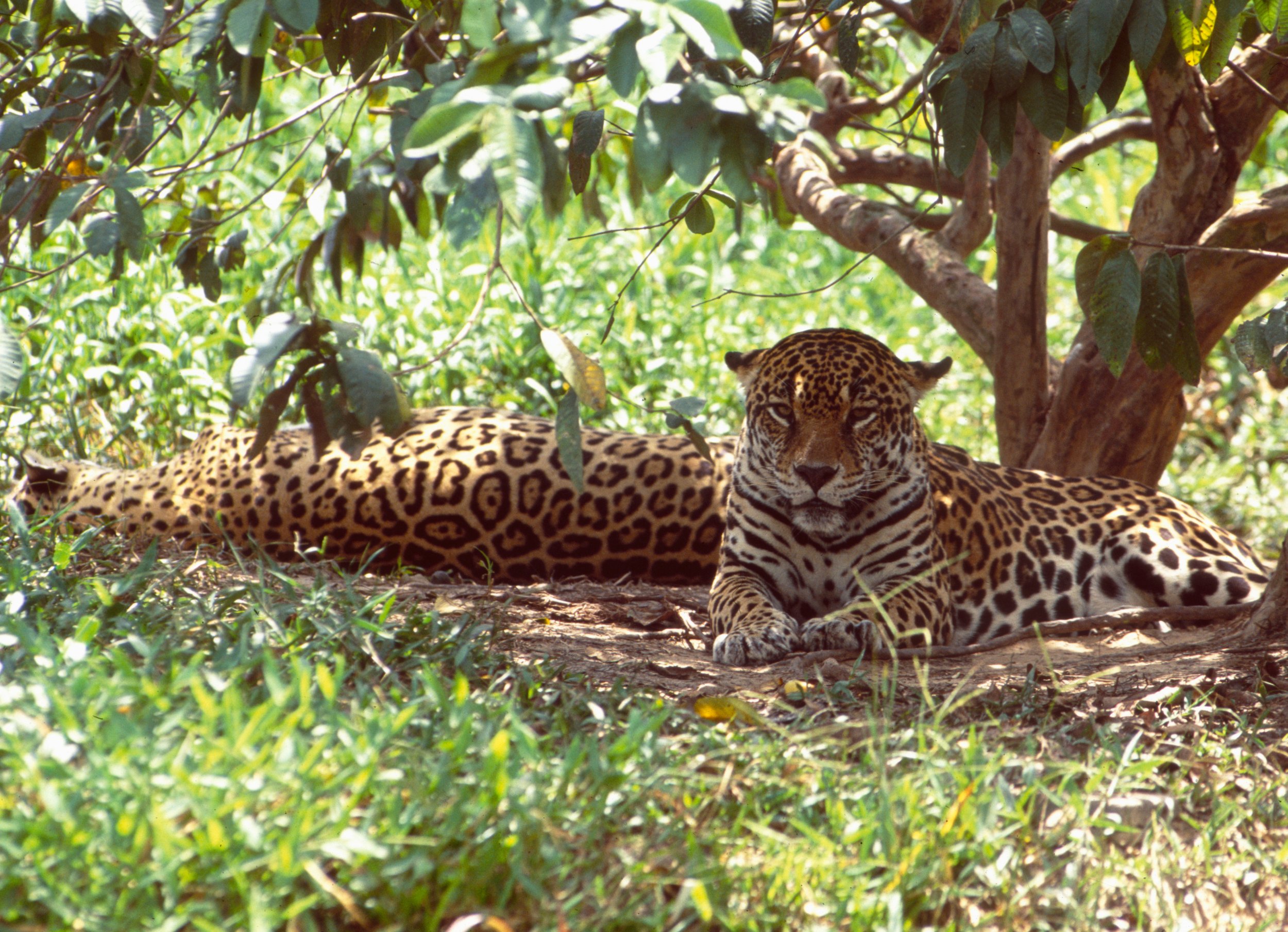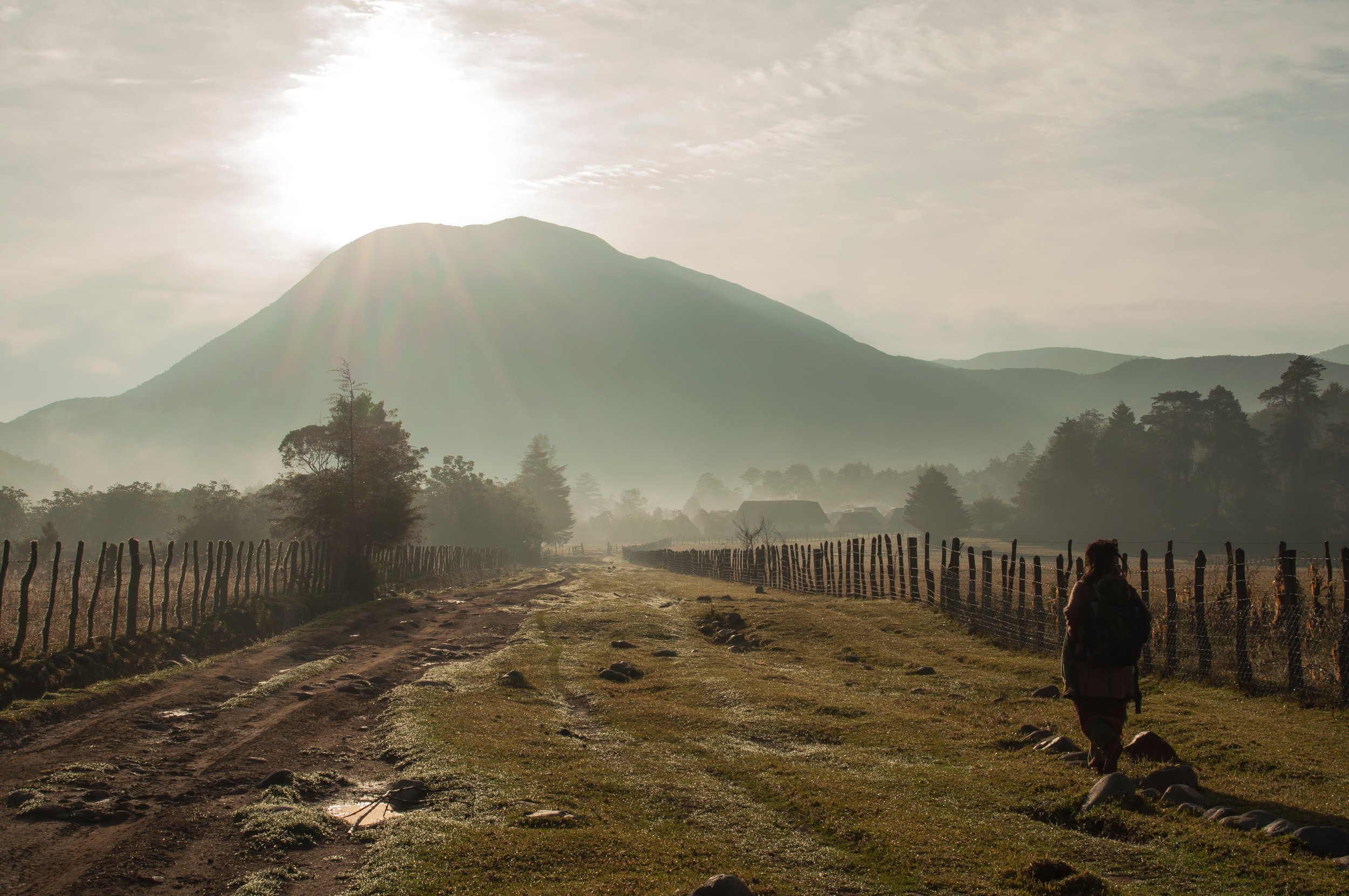Sierra Nevada de Santa Marta National Park, Colombia
OVERVIEW
The Sierra Nevada de Santa Marta is the birthplace of the Tayrona, a monumental indigenous civilization that existed in the country. Descendants of that culture still live there with close to 70,000 indigenous people, belonging to the Kogi, Arhuaco, Kankuamo, and Wiwa ethnicities. It is the world’s most elevated coastal mountain formation with two peaks at 5,775 meters high, the Cristobal Colon peak and the Simon Bolivar peak. Because of its variety of ecosystems, topographical elevations near the sea, its singular beauty, and its historical and cultural wealth, it constitutes a unique area worth visiting, and it was declared Biosphere Reserve by UNESCO in 1979.
This mountain formation contains an area of particular beauty and great cultural significance, as it is a sacred site for the four indigenous groups that inhabit the Sierra and it is called Teyuna Archeological Park, also known as the “Lost City,” which is administrated by the Instituto Colombiano de Antropología e Historia (ICANH).
SIZE
383,000 Hectares
GOAL
$960,000
VISITORS BY 2030
300,000
Introduction
High above the Caribbean coast of Colombia, where the land rises dramatically from the sea to nearly 5,700 meters, lies the Sierra Nevada de Santa Marta, a mountain range unparalleled in its ecological richness. This is the highest coastal range in the world, a sanctuary where glaciers gleam atop jagged peaks. Below them, the lush jungles of the lowlands give way to alpine meadows and mist-shrouded forests. The entire landscape is a mosaic of ecosystems, each more diverse than the last, making it one of the most ecologically rich places on Earth. From the dense, humid jungles of the lowlands to the mist-draped cloud forests and alpine páramos, the Sierra Nevada is a living archive of the Earth’s biodiversity.
This region hosts an astonishing array of ecosystems, each teeming with life. It is home to thousands of plant and animal species, many of which are found nowhere else on Earth. Jaguars stalk through the dense undergrowth, while the harpy eagle soars above the canopy, its wings cutting through the mist. In the rivers, the endangered Magdalena River turtle navigates waters that have flowed through these mountains for millennia. The Sierra Nevada is a refuge for life, where ancient species continue to thrive in an ever-changing world.
But this mountain range is more than just a hotspot for biodiversity; it is a spiritual heartland, a place the Kogi people call the "Heart of the World." The Kogi, direct descendants of the ancient Tayrona civilization, live in the shadow of these towering peaks, guarding the secrets of a culture that has remained largely unchanged for centuries. They believe that the Sierra Nevada is a microcosm of the planet, where every ecological zone mirrors the world's natural order. To them, this land is a living, breathing entity, and they are its caretakers, ensuring balance and harmony are maintained.
Conservation in the Sierra Nevada de Santa Marta is not just about preserving species; it’s about safeguarding an entire way of life, both human and ecological. The Sierra Nevada de Santa Marta is a living testament to the power of conservation, a place where biodiversity flourishes under the watchful care of an ancient culture. Here, every tree, every river, every peak is part of a complex web of life, a reminder that the world is not ours to conquer, but ours to protect.
At the invitation of the Government of Colombia, Global Conservation is working with Parque Nacional Sierra Nevada de Santa Marta (PNSN) and the Indigenous Peoples of Resguardo Kogui-Malayo-Arhuaco (RKMA) to jointly deploy Global Park Defense and Community Protection to stop illegal land clearing, deforestation and wildlife poaching.
Cultural History
Central to the indigenous Kogui culture is the belief that the health of the Earth depends on maintaining the delicate balance of nature, a balance that the Kogui have preserved through rituals and sustainable practices passed down through generations.
In the depths of the jungle, hidden from the modern world, lies Ciudad Perdida, the "Lost City," an ancient settlement older than Machu Picchu. This city, once the thriving center of Tayrona civilization, is now enveloped by the rainforest, where vines and roots intertwine with stone.
Threats to the Park and Indigenous Territories
Mining, intensive tourism, urban settlements, and coal ports are encroaching on this vulnerable land, threatening the survival of its biodiversity and the communities that live here.
Critically endangered species like the Tapir, Jaguar, Blue-billed Curassow, Harlequin Toad, Brown Spider Monkey, and Blue-bearded Helmetcrest all inhabit these forests, which contain about 20% of Colombia’s species diversity and provide fresh water for millions of people.
An indigenous Kogi woman in Sierra Nevada de Santa Marta, Colombia. Photo ©Youenn JACQUIN/AdobeStock
The Sierra Nevada de Santa Marta is the highest coastal range in the world, and hosts a rich tapestry of ecosystems.
Expanding Protection for Sierra Nevada de Santa Marta
At the invitation of Parques Nacionales Naturales de Colombia, Global Conservation had a week-long mission to the Sierra Nevada of Santa Marta and Tayrona National Parks to plan the deployment of Global Park Defense for the national park and indigenous territories, as well as the marine protection of Tayrona National Park.
Meetings with the indigenous leaders of the Kogi peoples and the national park authority resulted in a consensus on an action plan for restarting patrolling, monitoring, and surveillance of the indigenous territories in collaboration with park rangers to reduce the threat of illegal logging, land clearing, and wildlife poaching.
After thirty years of insecurity, where large areas of the national park were cleared for marijuana and coca cultivation and two park directors and a park ranger were killed in 2019, the national park authority seeks to build capacity to deploy SMART patrols and integrated Community Protection in critical areas facing deforestation.
In 2022, Parques Nacionales Sierra Nevada and Tayrona signed a new long-term agreement and management plan with the four indigenous groups, including the Kogui and Arhuaco people, and announced a major expansion of the national park by nearly 20% in 2023.
The expansion of the Sierra Nevada de Santa Marta National Park is part of an Indigenous-led strategy to reclaim lost ancestral territories and sacred sites surrounding the Sierra Nevada de Santa Marta known as “La Línea Negra” (the Black Line). This increased protection will also fortify ecological corridors for many species, from the lower terrain of the Sierra Nevada to the peaks, improving ecological resilience in the entire region.
Deforestation of the Sierra Nevada de Santa Marta National Park between 2010 and 2020 (Global Forest Watch).
The Challenge
With only one truck and three rangers to cover almost 400,000 hectares of difficult terrain with few roads, Sierra Nevada de Santa Marta National Park is seeking both technical and financial support to improve the effectiveness of patrolling and financing for joint patrols with indigenous peoples against deforestation, which has seen the national park and indigenous territories lose over 80% of the park’s forests in the past 30 years. Deforestation by fire, cutting, and clearing continues at a rapid pace—a nearly 4.2% loss over the past 10 years.
Much of South America, including Sierra Nevada de Santa Maria, is being devastated by forest fires. This artist-rendered image shows the amount of fires burning in South America. Created by OSORIOartist.
Saving Sierra Nevada de Santa Marta
This amazing landscape is being threatened by fires, clearing for cattle ranching/agriculture, illegal mining, encroachment, and illegal drug propagation and trafficking. All of these contribute to loss of habitat, resulting in escalating conflicts between jaguars and livestock and between peccaries and farmers. Poor roads and transport infrastructure, combined with weak cell and internet service interfere with the ability to respond efficiently to illegal activity.
Global Conservation is supporting the deployment of Global Park Defense and Community Protection in partnership with the indigenous peoples and national parks authority to protect over 120,000 hectares of highly biodiverse forests and wildlife habitats in the park’s northern sector.
Ciudad Perdida (Spanish for "Lost City") is the archaeological site of an ancient city in the Sierra Nevada de Santa Marta of Colombia
Priorities for deploying Global Park Defense
Expanding the number of Park Rangers and Community Patrolling Teams enabling a 50-strong Community Protection Force with equipment, systems and training
Deployment of a Trailcam Network for threat and wildlife monitoring.
Purchase of equipment for extended patrols, including hammocks, packs, and flashlights.
Support regular joint patrols between Indigenous Communities and Park Rangers.
Provide satellite internet for remote bases and a new command center.
Analyze flyover and satellite imagery to identify trails and new deforestation
Critical Initiatives
Global Park Defense
Deploy Global Park Defense, a multi-year method to achieve “No Cut, No Kill” protection and financial sustainability for continued preservation. Threat assessment, security and surveillance design, ranger deployment strategy is followed by law enforcement using state-of-the-art tools, like EarthRanger and SMART patrolling systems, with drones to document criminal activity and stop poaching and logging before it becomes severe.
Buritaca Valley Conservation Corridor
Global Conservation is funding the design and implementation of a conservation corridor to restore ecosystem balance and promote sustainable livelihoods of campesino and indigenous households of the Buritaca watershed, which will improve connectivity between the Lost City Conservation Area and Sierra Nevada de Santa Marta National Park, enhancing habitat for key biodiversity.
Indigenous-led Community Protection
Global Conservation support is enabling the organization and patrolling of over 80 indigenous eco-guards to cover long-range patrolling using satellite, GPS and SMART patrol systems to monitor and enforce existing laws and indigenous rights in the national park and indigenous territory.
Global Conservation initiatives rely on your generosity and commitment. Your contributions fund essential operations like anti-poaching patrols, wildlife rehabilitation, and community outreach programs. Join us in this vital mission—act now to preserve Sierra Nevada de Santa Marta National Park and make a lasting impact.
Partners in Conservation
Parques Nacionales Naturales de Colombia
Rainforest Trust and Resguardo Kogui-Malayo-Arhuaco (RKMA)
Rainforest Trust is partnering for the first time with an Indigenous-led organization—Resguardo Kogi-Malayo-Arhuaco—to expand the Sierra Nevada de Santa Marta National Park by protecting 172,500 hectares of Indigenous-owned land. This relationship with Resguardo Kogui Malayo Arhuaco is crucial to the success of the project. The land will then benefit from the highest level of environmental protection possible in Colombia—the only way to stop mining—while maintaining Indigenous ownership. These acres will be patrolled and supervised in collaboration with the Colombian National Parks authorities and the Kogui, Malayo, and Arhuaco people.



























